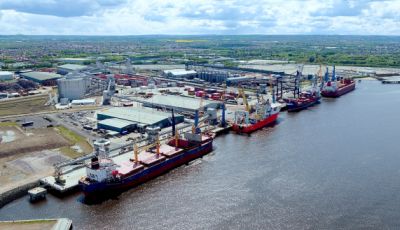Archives
Feature, Freight News, Sea
Tyne unveils platform for zero carbon
[ March 25, 2022 // Chris ]Once the nation’s leading coal outlet, the Port of Tyne has created a blueprint for decarbonisation of the sector.
As part of the Clean Tyne Project, the Port and Siemens have worked with Connected Places Catapult, Newcastle University and the North East LEP to deploy a real-time digital platform for scenario planning and feasibility studies to help determine the future power needs of the Port. Understanding its current and forecast power usage as well as its infrastructure opportunities will enable the port to define its path to decarbonisation – and ultimately achieve its vision of becoming a net-zero port by 2050.
The Clean Tyne project was granted funding by the Department of Transport to create a blueprint for the decarbonisation of the UK’s ports. The project is part of the Clean Maritime Demonstration Competition, which sees £30m in total invested in a number of initiatives to reduce emissions from the maritime sector.
The platform allows partners to determine which renewable energy implementations will offer the greatest benefits to the port and what capacity it will need from the grid in order to ensure the optimisation and resilience of clean energy supplies for shore power, land-based infrastructure and other use cases.
The port’s head of innovation and technology, Ian Blake, the tool would be pivotal for the Port of Tyne to achieve its ambitious decarbonisation and environmental targets, and it was already exploring how to expand the benefits further. It would create the perfect platform to demonstrate and disseminate the learnings and outputs with all ports in the UK.
Head of Microgrid Solutions, Siemens, Ian Lloyd, added: “There are hundreds of ports across the world, all burning a lot of diesel and impacting the environment. Through the Clean Tyne project with the Port of Tyne we have been able to undertake an advanced feasibility study and to create a dependable and scalable roadmap for the decarbonisation of ports worldwide.”

Tags: Port of Tyne











